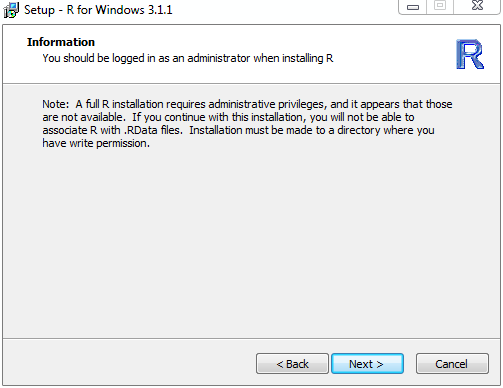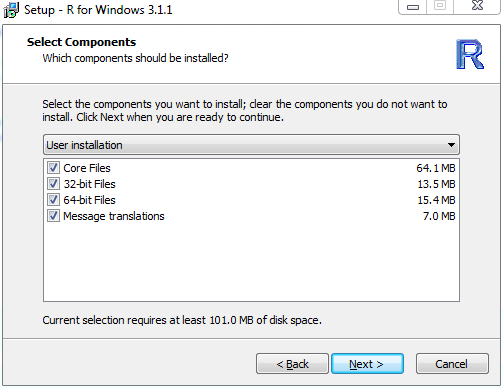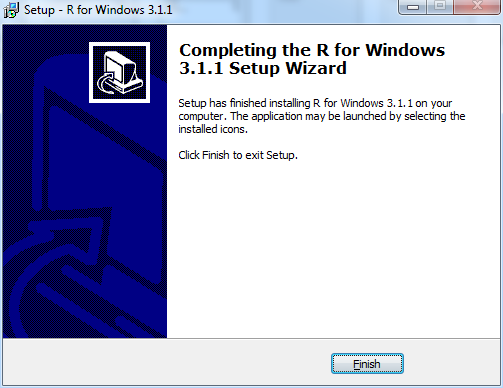R: Difference between revisions
Jump to navigation
Jump to search
No edit summary |
No edit summary |
||
| Line 49: | Line 49: | ||
==Customized Startup Environment== | ==Customized Startup Environment== | ||
From the customized startup environment options prompt, if you wish to go through the customized startup environment dialog select "Yes" here. Any of these options can be altered at a later time after installation if you decide you have a change in preference. | *From the customized startup environment options prompt, if you wish to go through the customized startup environment dialog select "Yes" here. Any of these options can be altered at a later time after installation if you decide you have a change in preference. | ||
[[Image:R_Install_6.PNG]] | [[Image:R_Install_6.PNG]] | ||
| Line 66: | Line 66: | ||
*That concludes the startup environment customization options for R. The following steps are the same as the above. | *That concludes the startup environment customization options for R. The following steps are the same as the above. | ||
==Opening R scripts with RScript== | |||
Users can open a file with R to a command terminal window via RScript. | |||
From within the \bin\x64 folder at the location that you installed R to you can run: | |||
<pre> | |||
RScript path\to\file\test.R | |||
</pre> | |||
Revision as of 22:41, 2 December 2014
R installation instructions for Windows
Basic Installation
- To retrieve the latest version of R from here: http://cran.r-project.org/
- Select "Download R for Windows" from the top of the screen
- Then click "Install R for the first time" on the first line
- This will take you to a download page, click "Download R<version number> for Windows" to begin the installation
- Navigate to the directory you downloaded the installer to.
- Run the .exe and step through the installer.
- Note: There will be a warning when you start the installer that says the full installation requires administrative privileges, disregard this message.
- Accept the License Agreement and continue.
- When prompted, choose an installation folder wherever you would like it within your home directory.
- Select the components that you wish to install, the defaults for this is fine.
- If you wish to customize the options for the startup environment then click Yes when prompted. If you are unsure what these are select "No", the defaults can be altered later.
For customized options see the section below
- Name the folder that will appear in the start menu, the default "R" is acceptable for this.
- Finalize your installation options and hit Next to begin the installation.
- After stepping through the dialog R will install itself to the folder you specified.
- Finish and close the setup. R is now installed locally on your account.
Customized Startup Environment
- From the customized startup environment options prompt, if you wish to go through the customized startup environment dialog select "Yes" here. Any of these options can be altered at a later time after installation if you decide you have a change in preference.
- The first prompt will determine which interface you wish to use. MDI (one main window for all R programs) or SDI (separate windows for each R program) If you have a preference, select which option you prefer.
- Next, determine how you wish the help format to be displayed. You can choose from either plain text format or HTML formatted.
- Finally, determine how you would like R to handle the proxy settings in Internet Explorer, whether you would like to use the standard settings or make use of internet2.dll.
- That concludes the startup environment customization options for R. The following steps are the same as the above.
Opening R scripts with RScript
Users can open a file with R to a command terminal window via RScript. From within the \bin\x64 folder at the location that you installed R to you can run:
RScript path\to\file\test.R











